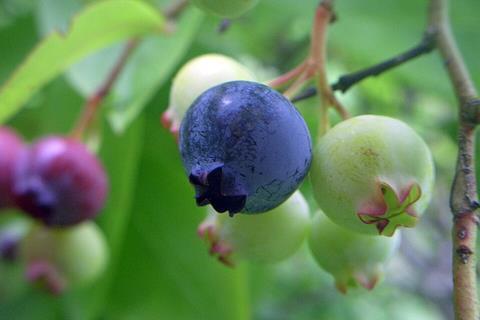Blueberry plants host diverse fungal communities on their aboveground tissues, yet how these communities shift across flower and fruit development has remained unclear.

This study identifies how fungal diversity changes over time and across tissue types in highbush blueberry, revealing dynamic transitions in the phyllosphere from buds to ripe fruits. Early-season buds and flowers harbor the highest fungal diversity, while unripe green fruits display the lowest, followed by recovery as fruits ripen.
READ MORE: Blueberries beware: Powdery mildew spreading across the globe
READ MORE: Sunflower extract fights fungi to keep blueberries fresh
Several core fungal taxa consistently appeared across seasons and plant tissues, including both beneficial and pathogenic members. These findings highlight how plant development shapes the phyllosphere microbiome and provide foundational knowledge for improving blueberry disease management.
Fungal pathogens
Microbial communities on plant surfaces influence nutrient cycling, defense, and fruit quality. In blueberries, fungal pathogens such as Botrytis cinerea and Colletotrichum fioriniae infect during bloom but may not cause symptoms until fruit maturity or postharvest, leading to significant yield and storage losses. Meanwhile, other fungi may be neutral or even beneficial, supporting colonization resistance that suppresses disease.
However, the blueberry phyllosphere microbiome remains far less characterized compared with its root and soil communities. Understanding how fungal communities vary among plant tissues and across developmental stages can provide insight into pathogen ecology and seasonal infection windows. Based on these challenges, deeper investigation of the blueberry phyllosphere microbiome is needed.
Fungal diversity and community structure
Researchers at Michigan State University conducted a two-year, multi-location seasonal survey of fungal communities across the stems, leaves, buds, flowers, and developing fruits of highbush blueberry (Vaccinium corymbosum). The study was published (DOI: 10.1093/hr/uhaf042) on May 1, 2025, in Horticulture Research.
Using internal transcribed spacer (ITS) amplicon sequencing, the team tracked how fungal diversity and community structure shifted from early-season bud swell through fruit ripening. Their results reveal strong temporal and tissue-specific patterns, including a core microbiome that persists across plant development.

The researchers collected blueberry branch samples every 1–2 weeks during the growing season, analyzing ITS sequences to characterize fungal operational taxonomic units (OTUs). Buds and flowers showed the highest fungal diversity, likely influenced by floral nutrients and pollinator visitation. In contrast, early developing green fruits exhibited the lowest diversity and evenness, suggesting that only a limited subset of fungi can colonize this nutrient- and pH-specific niche. As fruits ripened and anthocyanins and sugars accumulated, diversity increased again.
Core microbiome
A consistent core microbiome was identified, containing beneficial yeasts (Filobasidium, Sporobolomyces), commensals (Cladosporium, Epicoccum), and notable pathogens including Alternaria spp. and Botrytis cinerea. The presence of Colletotrichum fioriniae in buds and flowers supports evidence that infections may begin early, long before visible fruit rot emerges.
Network analyses identified certain taxa as highly interactive “hub” fungi that may structure community assembly. Some yeasts showed potential to suppress pathogens, while others co-occurred positively with disease-causing species, indicating potential microbiome-mediated influences on disease risk.
“The phyllosphere is a critical but understudied microbial habitat in blueberry production,” the study authors note. “By mapping fungal community changes from buds to ripe fruits, we now know when disease-related fungi establish and how beneficial groups shift throughout the season. These insights form a foundation for developing microbiome-informed disease control strategies, including biological control approaches that work with, rather than against, native fungi.”
Timing disease management
These findings offer new opportunities for timing disease management strategies. The sharp drop in microbial diversity during green fruit development may present a window when applying beneficial yeasts could enhance biological control effectiveness.
Identifying hub taxa also opens pathways for microbial community engineering aimed at suppressing fungal pathogens before fruit ripening. Ultimately, integrating microbiome knowledge with horticultural practices could reduce fungicide reliance, support pollinator safety, and improve fruit quality and storage life.
Future research may link plant chemical traits and cultivar genetics to microbial assembly, improving breeding for disease-resilient blueberry varieties.







No comments yet